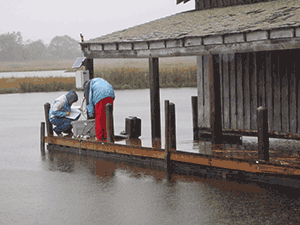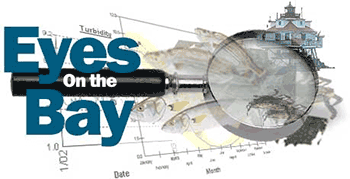Water Quality
The Department of Natural Resources’ Tidewater Ecosystem Assessment Division, in coordination with other state and federal agencies, oversees several water quality monitoring programs in the Chesapeake Bay. These programs build on historical monitoring efforts and provide some of the most direct linkages to management programs that aim to reduce the impacts of pollution on the Bay.

Long-term monitoring
The long-term Chesapeake Bay Water Quality Monitoring Program is a comprehensive water quality and habitat monitoring program. Started in 1984, this program collects data 15 times a year at 22 stations located in Maryland’s Chesapeake Bay mainstem and 12 times a year at 60 stations in the tidal tributaries. The monitoring program assesses water quality by measuring the levels of nutrients as well as closely related habitat conditions such as dissolved oxygen and water clarity.
 Shallow Water Monitoring
Shallow Water Monitoring
The Shallow Water Monitoring Program evaluates water quality in the shallow water regions of the Bay. Continuous monitors, which collect water quality data every 15-minutes around the clock, are deployed at over 30 locations throughout the Chesapeake and Coastal Bays. Some stations even provide real-time data via cellular telemetry. The Shallow Water Monitoring Program also conducts water quality mapping cruises, which intensively map water conditions at the surface in shallow and open waters.
 Get the Data
Get the Data
More information for all water quality monitoring programs, including data results, can be found on the Eyes on the Bay
website.